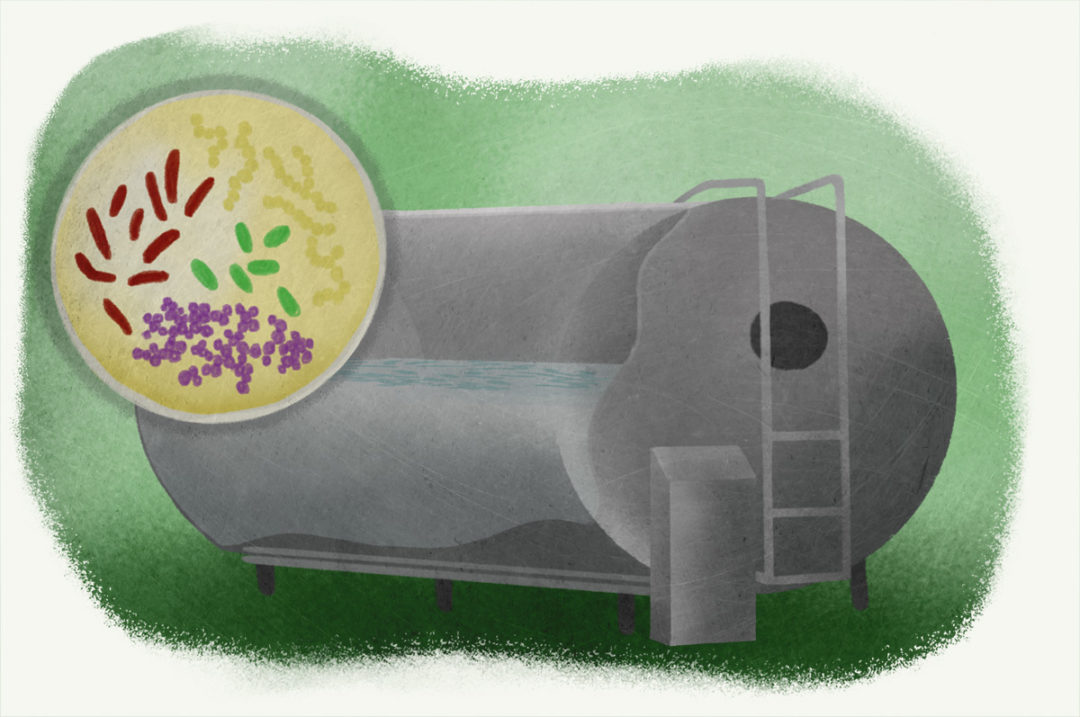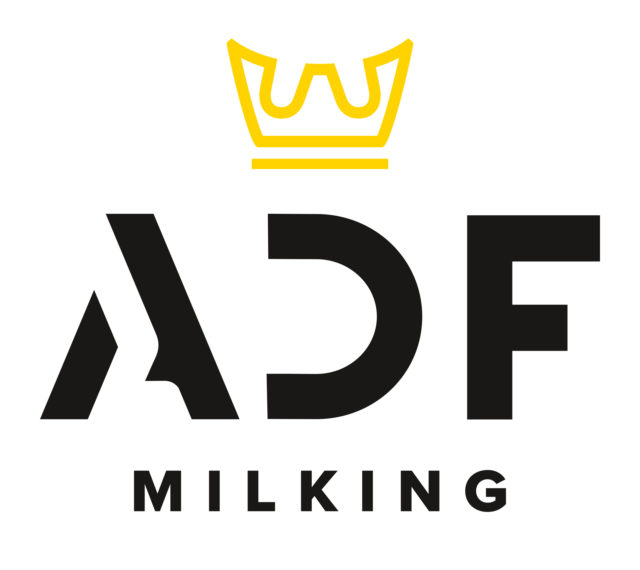When it comes to the topic of contagious mastitis in dairy cows, the conversation usually revolves around the well-known pathogens Staphylococcus aureus and mycoplasma, with the occasional nod to Streptococcus agalactiae, which is still out there lurking in the dairy population as a cause of contagious outbreaks. Oftentimes, prototheca never enters the discussion as the potential contagious mastitis threat that it is.
This slow-growing, unicellular algae has historically been considered to be only an environmental mastitis risk managed by identifying and eliminating the source from the cow’s environment. That prior understanding of this pathogen is changing, however, and data collected over the last decade has provided numerous instances of how herd outbreaks demonstrating cow-to-cow transmission can be a major driver of new infections.
Contagious spread of prototheca moves very slowly throughout a herd but eventually will reach a “tipping point” in which the number of new infections is occurring at an intolerable rate. At this point, the total level of infection in the herd is often untenable with maintaining a bulk tank somatic cell count (SCC) low enough to qualify as salable Grade A milk.
How do you detect the problem?
Prototheca mastitis is a primarily subclinical disease and considered to be a “low shedding” infection, meaning the numbers of infectious organisms coming off an infected animal into her environment are relatively small, compared to mycoplasma or S. agalactiae. Infected cows commonly present with individual cow SCC lingering between 200,000-400,000 cells per milliliter on a composite milk sample. Early in the infection period, many animals may even test as low as fewer than 200,000 cells per milliliter. This trend of low individual SCC may take multiple lactations to reach a point of elevated SCC and clinical mastitis that raises concern. Some animals may never experience clinical symptoms at all. This does not mean they do not present risk to the herd during this period.
While these early infection period symptoms are mild and sound innocuous enough, chronic prototheca infections will become problematic to the animals' health and degrade milk quality at the bulk tank level, if left undetected and ignored. Somatic cell counts will increase slowly but consistently over time, along with decreases in milk production and occurrences of clinical episodes, as health declines.
Culture detection
Because prototheca cows often have a low white cell count for an extended period, SCC is a woefully lagging indicator of infection status, and monthly DHI testing has limited scope sensitivity in its ability to find suspect infections. The most effective and progressive method for detection of prototheca-infected animals in the herd is by individual cow cultures, especially when used as a screening tool on fresh cows. Prototheca colonies are easily missed on standard blood agar culture due to their slow growth and low colony counts; they become overgrown by other bacteria on the plate or misidentified. Detection can be greatly improved on bulk tank and individual samples by use of a selective prototheca agar and extending the incubation time to 48 hours, as well as by using enhancement steps.
The significance of how much detection is improved by the addition of a prototheca-selective agar is shown in the data below. Our laboratory routinely performs 400-600 monthly comprehensive bulk tank cultures from dairies located in the Pacific Northwest and Mountain West regions. Prior to addition of this selective agar, fewer than 1% of the herds were bulk tank positive for prototheca. When a prototheca selective plate was incorporated into the protocol in May 2010, detection increased to 22%-25% of the herds and has remained there (Table 1).

This detection challenge applies to individual cow cultures as well. A review of 42,000 cow samples cultured on a blood agar plate and simultaneously on prototheca agar detected 2,252 prototheca positives. Of the positive cultures, only 21% were detected on blood agar while 79% were identified from the Prototheca agar plate (Table 2).
 These samples were submitted to our laboratories as part of routine
sampling and to investigate prototheca-positive bulk tank cultures. In
comparison to other contagious pathogens, prevalence of prototheca may
be mistakenly perceived to be very low, but the addition of the enhanced
detection methods discussed may change the picture.
These samples were submitted to our laboratories as part of routine
sampling and to investigate prototheca-positive bulk tank cultures. In
comparison to other contagious pathogens, prevalence of prototheca may
be mistakenly perceived to be very low, but the addition of the enhanced
detection methods discussed may change the picture.
When to investigate
A question frequently posed to me by producers is when to be concerned about prototheca. An excellent way to answer that is by running a monthly comprehensive bulk tank culture that includes this sensitive prototheca detection as part of the protocol. The goal is to maintain a negative status for presence of all contagious pathogens at the bulk tank level, which includes prototheca. A positive bulk tank should spur further investigation at the individual cow level. It means there are infected cows present in the herd that you should find. These animals may not yet be having a substantial negative impact on the bulk tank, but they present an exposure risk to their herdmates and will be responsible for the spread of infections.
A tricky part of managing prototheca is that the source of infections can be other infected animals, the environment or both. Environmental areas of importance include standing water, manure and bedding. Recycled sand bedding and composted manure solids have been determined as especially problematic as a source of new infections. In contradiction to prior beliefs, it is rarely detected in dairy water samples. Additionally, a critically important source of exposure is milking inflations contaminated by subclinical shedding from infected herdmates. Detection of prototheca in environmental samples can be challenging, as protocols for these types of cultures are not standardized between laboratories and typically focus on streptococci and coliform counts; few, if any, will detect prototheca without additional enhancement steps. Not all laboratories will have the scope or capability to process these types of samples; use of another lab may be necessary.
Zero tolerance
Control and prevention of prototheca mastitis abides by many of the same guidelines as other contagious pathogens; positive animals need to be identified and then segregated or removed from the herd. The key difference lies with detection and ensuring that adequate methods are being used on bulk tank and individual cow cultures to ask the question: Is prototheca present in the sample?
Once infected animals are detected, there are two options: permanent removal from the herd, or clear identification as a prototheca cow (eartag or leg band) and segregation to a pen that is milked last. Once a cow enters this pen, she does not leave for the remainder of her lifetime. Clean cows should not be moved in and out of this pen. Prototheca is unresponsive to antibiotic therapy and does not spontaneously cure; once identified as a prototheca cow, her status is permanent. The infection process moves slowly, which allows the producer some time to make progress in getting in front of the spread. Eliminating prototheca from a herd can be a long and frustrating process due to new infections from bedding or other environmental sources and infected animals shedding the organism in low numbers. Routine monitoring of all fresh cow cultures, as well as mastitis cows, for prototheca will play a critical role in controlling the new infection rate. For dairies both large and small, utilizing results from individual cow, bulk tank and environmental cultures will allow you to make smart and economical management decisions in keeping prototheca mastitis under control and eradicating it from the herd.
After thinking about the threat this pathogen can pose to your herd, you should consider the question “What’s in your bulk tank?” Many think this pathogen is a relatively infrequent problem for most dairymen. There is some truth to that. Based on the investigations done with prototheca bulk tank screening, most herds never show the organism at the tank level. It is a surprise for many to realize the data show that consistently for over 12 years, we have seen an average of 27% of the tanks showing one or more positive detections at the tank level. A serious prototheca problem is present when you see tank positive detections increasing. In herds that have been positive on each monthly test, herd culture revealed as high as 30% of the animals were permanently infected. Don’t let this disease take you by surprise and degrade your milk quality and reduce your milk check.










